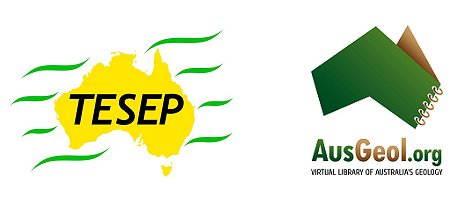Clastic Sedimentary Rocks
Clastic sedimentary rocks are composed of particles (clasts) that have been deposited, compacted and then cemented together.
The following 3D models provide examples of clastic sedimentary rocks with models organised in rough order of decreasing grain size.
∗ Cobble Conglomerate
A conglomerate is a clastic sedimentary rock with particles larger than 2mm. Cobbles are particles from 64 to 256 mm in diameter.
This example shows a poorly sorted conglomerate that contains a wide range of different particles. Many particles are rounded but some are quite angular.
A rock like this would have formed in a high-energy environment such as a fast-flowing river or a rocky beach.
This example is from the Pilbara in Western Australia
∗ Pebble Conglomerate and Coarse Sandstone
This outcrop in a cliff south of Newcastle NSW shows layers of coarse sandstone and pebble conglomerate.
Tilted layers in this outcrop are called cross beds and they can be used to tell which way the water was flowing (from right to left in this case).
This rock was formed in a high-energy braided river about 260 million years ago.
∗ Fine Sandstone
This model shows fine grained sandstone at Eaglehawk Neck, Tasmania.
The rock contains a large brachiopod fossil which indicates that these rocks were formed in the ocean in relatively shallow water.
∗ Fine Sandstone and siltone
This outcrop of tilted layers of fine-grained sandstone and siltstone is at Scamander in northeast Tasmania.
The sandstone layers are stronger and stick out from the surface. The siltstone layers crumble away.
These rocks were formed in the deep ocean from repeated submarine landslides. Each set of sandstone and siltstone layers corresponds to a single landslip event.
∗ Siltstone / mudstone
These rocks are composed of silt and clay sizes particles (less than 0.06mm in diameter).
The fine particles were deposited in thin layers in a freshwater swamp about 260 million years ago.
The large brown oval-shaped features are called concretions and these grew in the mud after the original sediments were deposited.
.
Now explore biological and chemical sedimentary rocks!
| Minerals | Rock Cycle | Igneous Rocks | Sedimentary Rocks | Metamorphic Rocks |

A joint TESEP - AusGeol.org production.
This educational product is designed for Yr 7-10 secondary students to complement the earth and space component
of the Australian National Science Curriculum and all Australian State and Territory curricula
The content and design of this educational product is based upon materials previously published by AusGeol.org
